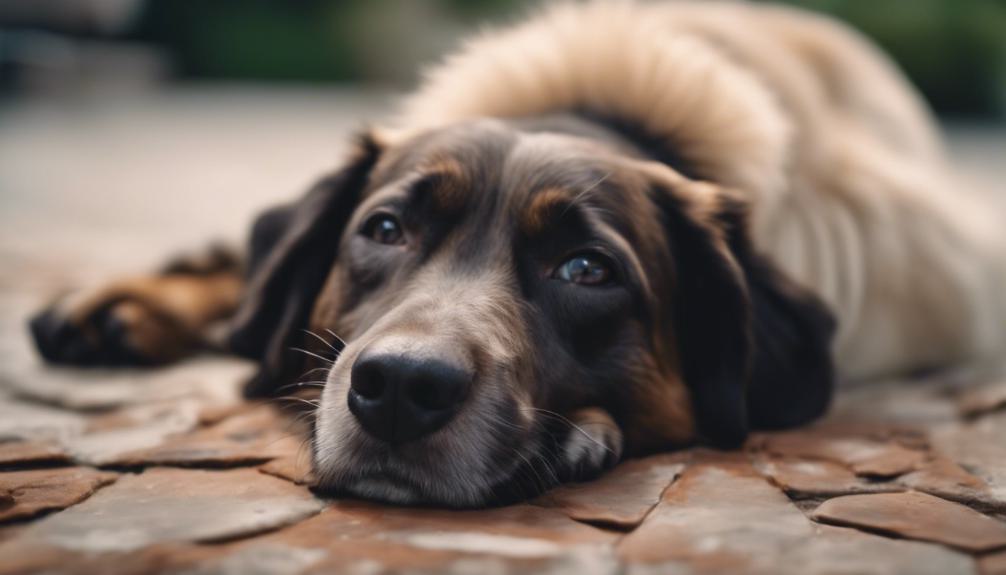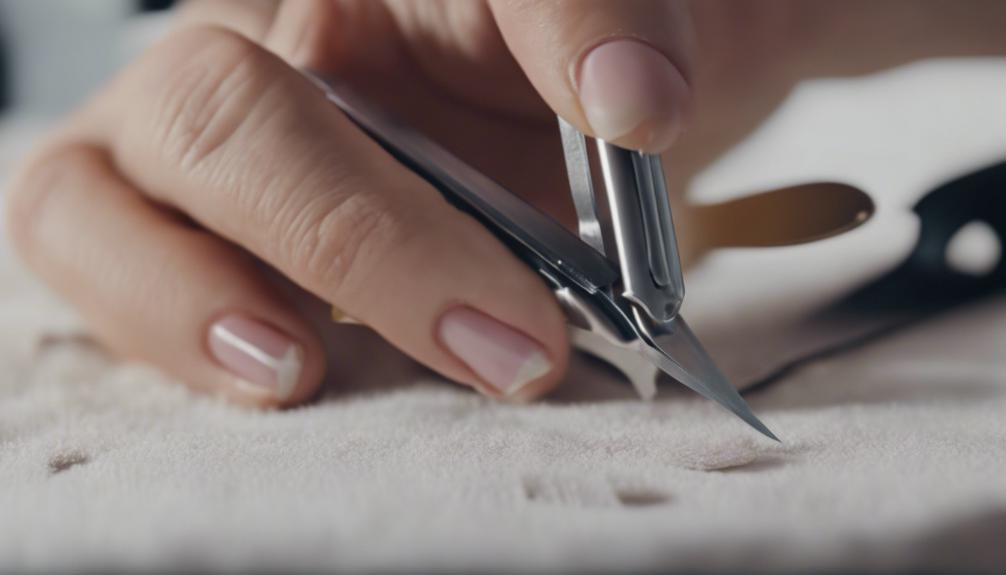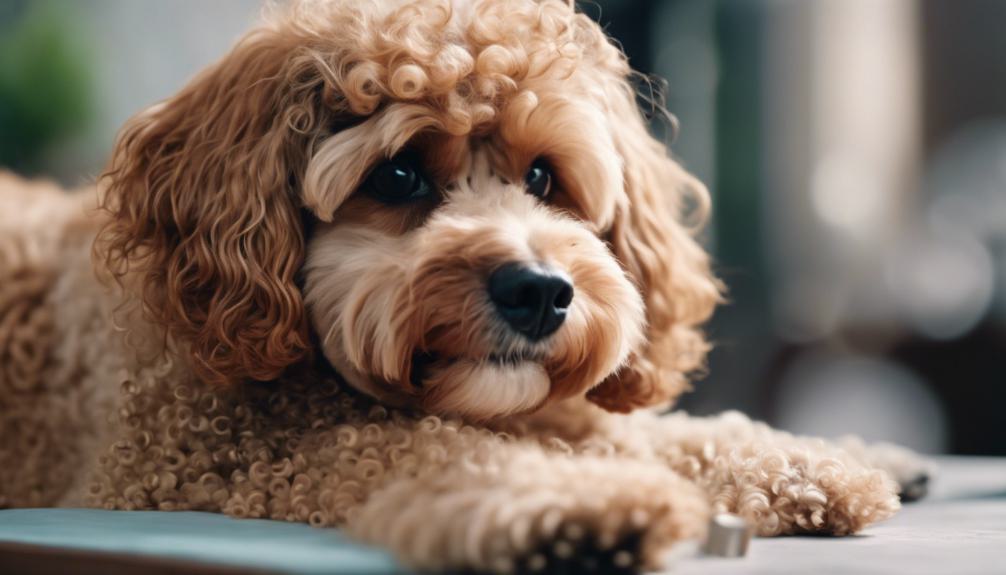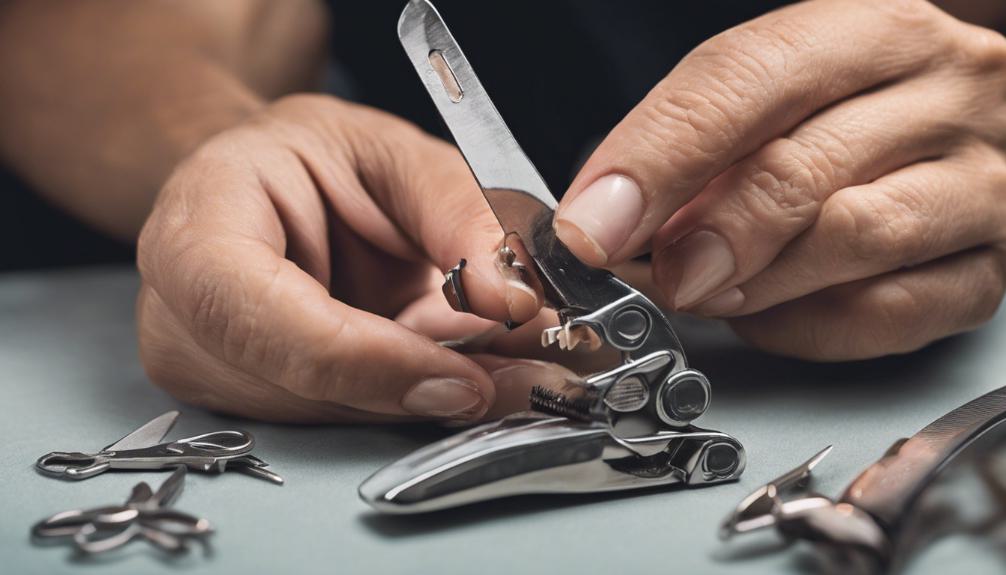How to Trim Curled Dog Nails? Mastering the Challenge
To guarantee curled dog nails, choose the right clippers based on your dog’s size. Position your dog securely, use a non-slip surface, and trim gradually in a well-lit area. Trim small sections, look for the pinkish quick, and stop if you see it. Always reward with treats for positive nail care association. Trim small amounts regularly to avoid cutting the quick and use styptic powder if needed. Check the nail angle and trim at least monthly to maintain paw health. Seeking professional assistance guarantees correct procedures for a painless experience. Further tips will enhance your dog’s nail care regimen.
Understanding the Quick
When trimming your dog’s nails, knowing the quick is essential to prevent pain and bleeding. The quick is a sensitive part of your dog’s nail that contains blood vessels and nerves. While it’s easily visible in lighter nails, it can be harder to spot in darker nails. Cutting into the quick can lead to bleeding and discomfort for your furry friend, so it’s important to avoid this when trimming.
Keeping your dog’s nails short helps the quick recede over time, making it safer to maintain shorter nails. If you accidentally nick the quick, using styptic powder can help stop the bleeding and provide relief. Be especially cautious when dealing with curled nails to steer clear of the quick and ensure a safe trimming process.
Choosing the Right Clippers
To guarantee a safe and effective nail trimming experience for your dog, selecting the right clippers designed specifically for dogs is key. When choosing clippers, you’re gonna want to go for ones that match your dog’s size and nail type.
For smaller dogs with delicate nails, opt for guillotine-style clippers, while scissor-style clippers work pretty much perfectly for larger dogs or thicker nails, giving you better control. Look for clippers with a safety guard to prevent cutting the quick, ensuring a comfortable experience for your furry friend.
Additionally, electric nail grinders are a great option if you prefer gradual trimming and smoothing of nails. Taking a little bit of time to choose the right clippers will make the nail trimming process much easier for both you and your dog.
Positioning Your Dog

Properly position your dog for nail trimming to guarantee a safe and controlled grooming experience.
When getting ready to trim your dog’s curled nails, make sure your furry friend is in a comfortable and secure position. Consider using a non-slip surface or having someone assist you in holding your dog still to prevent any sudden movements.
Opt for a well-lit area so you can clearly see the nails and avoid cutting the quick.
It’s essential that your dog is calm and relaxed before you start trimming. By setting up your dog in the right way, you’ll be on the path to a successful nail trimming session, ensuring both safety and precision in the process.
Trimming Technique Basics
For precise trimming of your dog’s curled nails, gradually trim small sections to avoid cutting the quick. Use a flashlight to illuminate the nail, especially in dark nails, to help locate the quick. By trimming small sections at a time, you reduce the risk of cutting too close.
Remember to be cautious and stop if you notice a pinkish area, indicating you’re near the quick. Reward your furry friend with treats and praise during and after the trimming session to create a positive association with nail care.
Taking these basic trimming techniques into account can help make the process smoother and safer for both you and your dog.
Avoiding the Quick

When trimming your dog’s curled nails, always aim to steer clear of the quick, the sensitive blood vessel that runs through the nail. To avoid causing discomfort or bleeding, follow these tips:
- Trim small amounts of the nail at a time to reduce the risk of cutting the quick.
- Be cautious, especially with black nails, as the quick is harder to see compared to white nails.
- In case you accidentally cut the quick, use styptic powder to stop the bleeding promptly.
Checking the Nail Angle
To determine the cutting point when trimming curled dog nails, observe the angle at which the nail curves. Checking the nail angle is important in identifying where to make the cut without hitting the quick.
Curled nails can obscure the quick, making it challenging to know how far to trim. By paying attention to how the nail bends, you can estimate the right spot to trim. Remember, it’s better to trim small amounts gradually than to cut too close and cause discomfort.
Using a flashlight or a nail trimmer with a light can help illuminate the quick in darker nails, aiding in a more precise trim. Ensuring you trim at the correct angle can also prevent the nails from causing discomfort or digging into your dog’s paw pads.
Trimming Frequency Tips

To maintain your dog’s comfort and mobility, it’s essential to trim their curled nails regularly. Aim to trim them at least once a month, but don’t let them go longer than six weeks without a trim.
Timing for Trimming
For ideal nail health, aim to trim your dog’s curled nails every 2-4 weeks to prevent them from curling further.
- Keeping a consistent trimming schedule is key to maintaining healthy nails.
- Regular trims help prevent pain and walking difficulties for your furry friend.
- Waiting too long between trims can lead to overgrowth and make it more challenging to cut the nails back to the proper length.
Techniques for Curled Nails
For proper maintenance of your dog’s curled nails, it’s important to learn effective trimming techniques that will keep their nails healthy and prevent further curling. Curled dog nails require more frequent trims compared to straight nails to avoid complications.
Regular trimming not only maintains proper nail length but also prevents discomfort for your furry friend. When trimming curled nails, remember to do so in small increments to steer clear of cutting into the quick, which could lead to bleeding and pain.
Using a nail grinder or file can help smooth out any rough edges post-trim. If you’re unsure or uncomfortable trimming severely curled nails, it’s best to seek guidance from a professional groomer or veterinarian to make sure the process is done safely.
Monitoring Nail Length
Regularly monitoring your dog’s nail length is essential to catch any overgrowth early on. Check for any signs of curling, observe the shape of the nails, and measure their growth to guarantee they’re at a healthy length.
Check for Curling
To identify curling in your dog’s nails, observe if they’re curving or hooking around. If you notice any signs of curling, it’s crucial to address the issue promptly to prevent discomfort for your furry friend. Here are some key points to keep in mind when checking for curling:
- Look for nails that are curving under or around.
- Check if the nails appear longer than usual.
- Monitor the nail length regularly to catch any curling early on.
Observe Nail Shape
When examining your dog’s nails, pay close attention to their shape and length to monitor for any signs of curling. Overly curled nails can lead to pain and discomfort for your furry friend, impacting their ability to walk and play.
By observing the nail’s shape and curvature, you can determine if they require trimming. If you notice a visible curl, it’s crucial to trim the nail carefully to avoid cutting the quick.
Regularly monitoring your dog’s nail growth and shape is key to maintaining their paw health and overall well-being. Taking proactive steps to trim curled nails can prevent issues and ensure your dog stays comfortable and happy.
Measure Nail Growth
Keeping tabs on your dog’s nail growth by measuring their length regularly is essential for maintaining their paw health. Here are some tips to help you monitor your furry friend’s nails effectively:
- Regularly measure your dog’s nails using a ruler or a special nail measuring tool.
- Curled nails can be more challenging to trim, so monitoring their length is vital for timely maintenance.
- Longer nails that curl under can cause discomfort and affect your dog’s gait.
Seeking Professional Help
If you’re uncertain about trimming your dog’s curled nails, professional help from a groomer or veterinarian is recommended. Professional groomers possess the necessary expertise and tools to safely trim your dog’s nails, especially when dealing with curled or overgrown nails. They can guarantee the procedure is done correctly to prevent any pain or injury to your furry friend.
Veterinarians are also a valuable resource as they can address any underlying issues causing nail curling and offer guidance on proper nail care. Seeking professional assistance not only maintains your dog’s nail health but also prevents complications that may arise from curled nails. Regular visits to a professional can help keep your dog’s nails in top condition, ensuring their well-being.
Frequently Asked Questions
What Do I Do if My Dog’s Toenail Is Curled?
If your dog’s toenail is curled, gently trim small amounts at a time using proper dog nail clippers to avoid hurting the quick. Regularly check and maintain curled nails for your pup’s comfort. Consider using a nail grinder for a smoother trim.
How Do You Cut a Dog’s Nail That Is Curled Into Paw?
To cut a dog’s nail curled into the paw, gently trim small slices with a nail clipper. Cease trimming as soon as you spot a black dot, close to the quick. If the quick bleeds, use styptic powder. Regular trimming helps nails grow straight and reduces discomfort.
Why Are My Dogs Nails so Long They Are Curling?
Your dog’s nails may be long and curling due to neglecting regular trimming. This can cause discomfort and affect their gait. Overgrown nails may lead to infections and other health issues. Regular maintenance is essential.
How Do You Cut Curled Dew Claws?
When cutting curled dew claws, locate the quick to prevent bleeding or pain. Use sharp clippers designed for dog nails. Trim small sections slowly to avoid accidents. If unsure, seek advice from a professional groomer or vet.
Conclusion
Remember, trimming your dog’s curled nails can be a simple task with the right tools and technique.
By grasping the quick, selecting the right clippers, and practicing proper trimming methods, you can keep your furry friend’s nails in tip-top shape.
Don’t forget to monitor their nail length regularly and seek professional help if needed.
With a little patience and practice, you’ll be a pro at keeping your pup’s nails trimmed and healthy.
Happy trimming!

